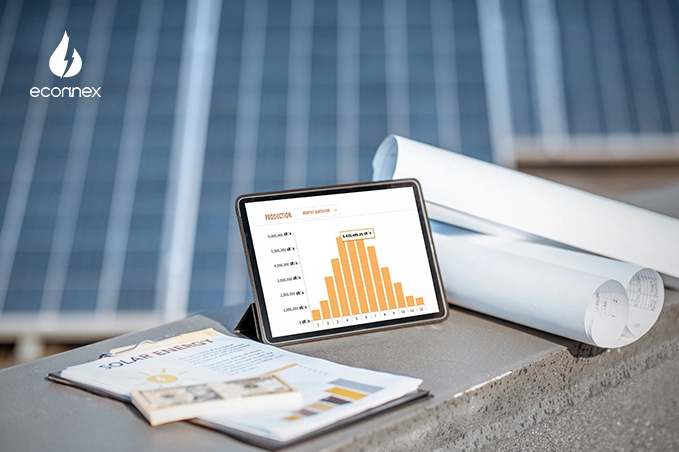Avoid costly mistakes when comparing energy plans. Learn the common pitfalls that cost Australians hundreds yearly and how to find the right deal.

Published on 09/07/2025
By Pallav Verma
Energy Comparison
Comparing energy plans can feel overwhelming, but avoiding these common pitfalls will help you find the right deal for your household. Many Australians make simple mistakes that cost them hundreds of dollars each year—mistakes that are entirely preventable with the right approach.
Understanding how to compare electricity providers effectively isn't just about finding the cheapest rate. It's about finding the plan that best matches your usage patterns, budget, and lifestyle needs. This comprehensive guide will walk you through the most frequent errors consumers make during the comparison process and show you how to avoid them.
Note: This information is general in nature and does not take into account your personal objectives, financial situation, or needs. Not all energy retailers or plans available in the market are compared. We may receive a commission for referrals made via our platform.
One of the biggest mistakes when conducting an energy price comparison is getting caught up in headline rates. That attractive discount percentage or low cent-per-kWh rate might not tell the complete story about what you'll actually pay.
Energy bills consist of two main components: usage charges (what you pay for the electricity you consume) and supply charges (daily fixed costs). Many advertised rates only highlight usage charges, but supply charges can significantly impact your total bill, especially if you're a low-usage household.
For example, Provider A might advertise 25c/kWh with a $1.20 daily supply charge, while Provider B offers 28c/kWh with a $0.80 daily supply charge. For a household using 15 kWh per day, Provider B would actually be cheaper despite the higher usage rate.
Discounts are often applied to inflated reference prices, making them appear more attractive than they actually are. A 30% discount off an inflated rate might still cost more than a plan with no discount but a genuinely competitive base rate.
When you compare electricity rates, always look at the total estimated annual cost rather than just the discount percentage. This gives you a clearer picture of what you'll actually pay.
Many consumers make the mistake of choosing plans without understanding their own energy consumption habits. This oversight can lead to selecting inappropriate tariff structures that increase costs rather than reduce them.
If you're frequently home during the day or run appliances during peak hours, a time-of-use tariff might not suit your lifestyle. Conversely, if you can shift your usage to off-peak periods, these tariffs could offer significant savings.
Your energy usage likely varies throughout the year. Consider both summer and winter consumption when you compare energy plans. A plan that works well in mild weather might become expensive when you're running air conditioning or heating regularly.
Before starting your comparison, gather at least 12 months of electricity bills. This data helps you understand your actual usage patterns and ensures you're comparing plans based on realistic consumption figures rather than estimates.
While the focus often falls on rates and discounts, contract terms can significantly impact your experience and costs over time.
Some plans include exit fees or early termination charges that can negate any savings if you need to switch providers. Others might have lock-in periods that prevent you from accessing better deals if they become available.
Many contracts include clauses allowing providers to change rates with minimal notice. Understanding these terms helps you assess the long-term value of a plan, not just the introductory rates.
Discounts and special rates often have limited benefit periods. A plan offering 20% off for the first year might become expensive once that discount expires. Factor in the full contract period when making your decision.
When you compare electricity providers, it's easy to focus only on the most well-known brands or the first few results you see. This approach can cause you to miss plans that might better suit your needs.
Smaller energy retailers often offer competitive rates and personalised service but might not have the same brand recognition as major providers. Don't automatically dismiss these options—they could provide better value.
If environmental impact matters to you, consider providers offering renewable energy plans. While these might cost slightly more, many households find the environmental benefits worth the additional expense.
Some providers offer discounts for combining electricity and gas services. If you use both utilities, bundling might provide savings, but always compare the total cost against separate plans to ensure you're getting genuine value.
Energy contracts contain important details that can affect your costs and experience. Rushing through the comparison process without reading terms and conditions is a costly mistake.
Some plans offer discounts for direct debit payments or monthly billing. Others might charge fees for certain payment methods or billing frequencies. These details can impact your overall costs.
Consider the provider's customer service reputation and support options. A slightly higher rate might be worthwhile if it comes with better customer service, especially if you anticipate needing support.
Understanding how the switching process works and what happens if you need to disconnect service can save you time and money down the track.
Energy prices fluctuate throughout the year, and the timing of your comparison can affect the options available to you.
Energy markets can be volatile, with prices changing based on wholesale costs, regulatory changes, and market competition. What looks like a good deal today might not be competitive next month.
Starting your comparison process well before your current contract expires gives you time to thoroughly research options and avoid rushed decisions. Last-minute comparisons often lead to suboptimal choices.
Some providers offer seasonal promotions or adjust their rates based on expected demand. Consider timing your comparison to take advantage of these market conditions.
Many comparison tools use average usage figures, but these estimates might not reflect your actual consumption patterns. Using inaccurate data leads to misleading comparisons.
Collect your last 12 months of electricity bills to get accurate usage figures. If you don't have paper bills, most providers offer online account access where you can download this information.
Your usage might differ significantly from average households. Large families, people who work from home, or those with electric vehicles or pools have different consumption patterns that affect which plans offer the best value.
Consider any upcoming changes to your household that might affect energy usage. New appliances, additional family members, or lifestyle changes can impact your consumption patterns.
Many households use both electricity and gas, but they often compare these services separately. This approach can prevent you from identifying the most cost-effective overall solution.
Some providers offer discounts for customers who take both electricity and gas services. These dual fuel discounts can provide genuine savings, but you need to compare the total cost of both services.
Having both utilities with the same provider can simplify billing and customer service interactions. While this convenience might not save money, it can reduce administrative burden.
Sometimes the best electricity plan and the best gas plan come from different providers. Compare both approaches—bundling with one provider versus choosing the best individual plan for each utility.
If you have solar panels or are considering installing them, understanding feed-in tariffs is crucial for making the right plan choice.
Different providers offer varying rates for excess solar energy you export to the grid. These rates can significantly impact the financial benefits of your solar system.
Some providers offer higher feed-in rates during peak periods. If your solar system produces energy during these times, you might earn more from these tariff structures.
Several providers offer plans specifically designed for solar customers, with features like higher feed-in tariffs or time-of-use rates that complement solar production patterns.
While rates and terms are important, customer service quality can significantly impact your experience, especially if you encounter billing issues or need support.
Check customer reviews, ombudsman complaint statistics, and industry ratings before choosing a provider. A slightly higher rate might be worthwhile if it comes with better customer service.
Consider when and how you can contact customer service. Some providers offer 24/7 support, while others have limited hours. Choose based on your preferences and likely support needs.
Some providers focus on digital customer service through apps and online portals, while others offer more traditional phone-based support. Consider which approach suits your preferences.
Energy plan comparisons require careful consideration of multiple factors. Rushing this process often leads to poor decisions that cost money over time.
Allow yourself adequate time to research options, read terms and conditions, and understand the implications of your choice. This investment of time upfront can save significant money later.
Don't hesitate to contact providers directly with questions about their plans. Understanding unclear terms or conditions before signing up prevents unpleasant surprises later.
Consider using independent comparison services or seeking advice from consumer advocacy groups. These sources can provide unbiased information to help guide your decision.
Avoiding these common mistakes will help you make a more informed decision when comparing energy plans. Remember that the cheapest advertised rate isn't always the best deal—the right plan depends on your specific usage patterns, preferences, and circumstances.
Take time to understand your energy consumption, read contract terms carefully, and consider all available options. This thorough approach will help you find a plan that truly meets your needs and potentially saves you money.
Ready to start your comparison?
Compare energy plans at electricityprovider.com.au and find options that suit your household needs. Our platform helps you explore offers from participating retailers, with transparent plan information and easy comparisons to support your decision-making.




